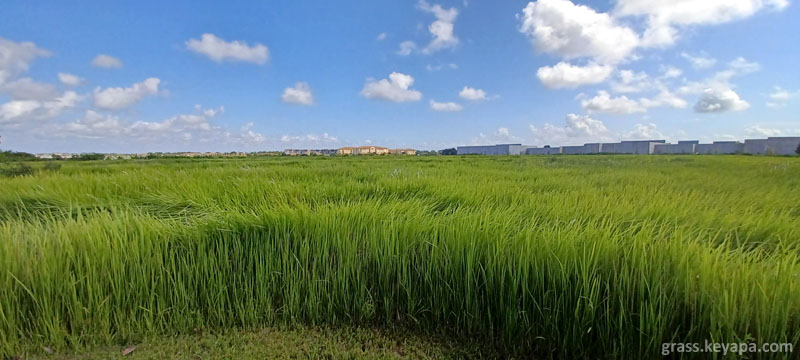
The Elton hypothesis states that environments with lower resident diversity will be less resistant to invasion. One possible reason for this is that a diverse assemblage of species or functional types is better able to fully exploit all the resources in the area, and thus the invader will not be able to find any niche avilable in an already-crowded field. Another possible reason for this is that diverse communities are postulated to have greater interspecific competitors, whose capabilities will allow them to resist the new invader.
This hypothesis was not able to stand up when the invasive Imperata cylindrica (locally known as cogon grass) was studied in North Florida. In that study, sites with a very diverse range of species was less able to compete against I. cylindrica compared to sites dominated by Andropogon virginicus (locally known as broomsedge). In addition, adding this latter species to any community increased the ability of the community to resist cogon grass.

A new study also seems to show that this hypothesis fails to explain the interaction of the invasive Microstegium vimineum (commonly called Japanese stiltgrass locally) in diverse habitats. This C4 grass is a shade tolerant member of the subfamily Panicoideae that is found in the dark understory of forests in the USA.
I met this species a lot when I lived in the northeast, as it is quite a common companion whenever we hiked in the forests of that area. The leaves are pretty and delicate looking, but the beauty of it belies its reputation as one of the most aggressive invaders of northeast and other forests. It also has been implicated as one of the top species that alter fire regimes, because its presence increases fire occurrence, fire size, and fire frequency (Fusco, 2019). It has recently been spotted in Northern Florida, but a fungal pathogen has been affecting its population in the southeast, so there is some hope that some biological control might be possible to stop its so far inexorable spread (Warren and Bradford, 2021).

In this new study, the researchers tried to determine the effect of the native plant diversity of a site on the growth of M. vimineum. They did this by altering native plant diversity via two methods: (1) reducing native plant diversity via removal of rare species; and (2) reducing native plant dominance (and increasing evenness) via removal of a dominant native plant. They then studied how the invading grass reacted to these treatments (Williams and Brewer, 2024).
They found out that reducing native plant diversity had no effect on the relative growth rate of M. vimineum compared to controls. In the same way, dominance reduction also had no effect on the invader’s growth. This showed that the level of diversity in assemblages of native plants do not affect the expansion and growth of M. vimineum, a result that was also determined when the other study focused on I. cylindrica instead.
It should be noted that these two studies seemed to be contrary to the findings of other studies, that did find that more diverse assemblages were able to resist invaders better. However, these other studies examined different invading species, and not M. vimineum or I. cylindrica. Thus, it seems that diversity is a factor in some invasive cases, but not when the invader has been proven to be very highly aggressive.
These counter results caution us about making ready and easy assumptions about diversity and its benefits, without taking into consideration specific instances, such as the type of invasive that has entered into the equation. Diversity may be a common goal in ecological restoration, but it is not the only solution to resisting the assaults of invading species.

Literature Cited
E.J. Fusco, J.T. Finn, J.K. Balch, R.C. Nagy, & B.A. Bradley (2019., Invasive grasses increase fire occurrence and frequency across US ecoregions, Proc. Natl. Acad. Sci. U.S.A. 116 (47) 23594-23599, https://doi.org/10.1073/pnas.1908253116
Warren, R.J., Bradford, M.A (2021). Non-native Microstegium vimineum populations collapse with fungal leaf spot disease outbreak. Plant Ecol 222, 107–117. https://doi.org/10.1007/s11258-020-01091-4
Williams GL, Brewer JS (2024). Naturally diverse plant communities do not resist invasion by the strong competitor, Microstegium vimineum. Am J Bot. Jul;111(7):e16362. doi: 10.1002/ajb2.16362. Epub 2024 Jun 28. PMID: 38943238.

Leave a Reply